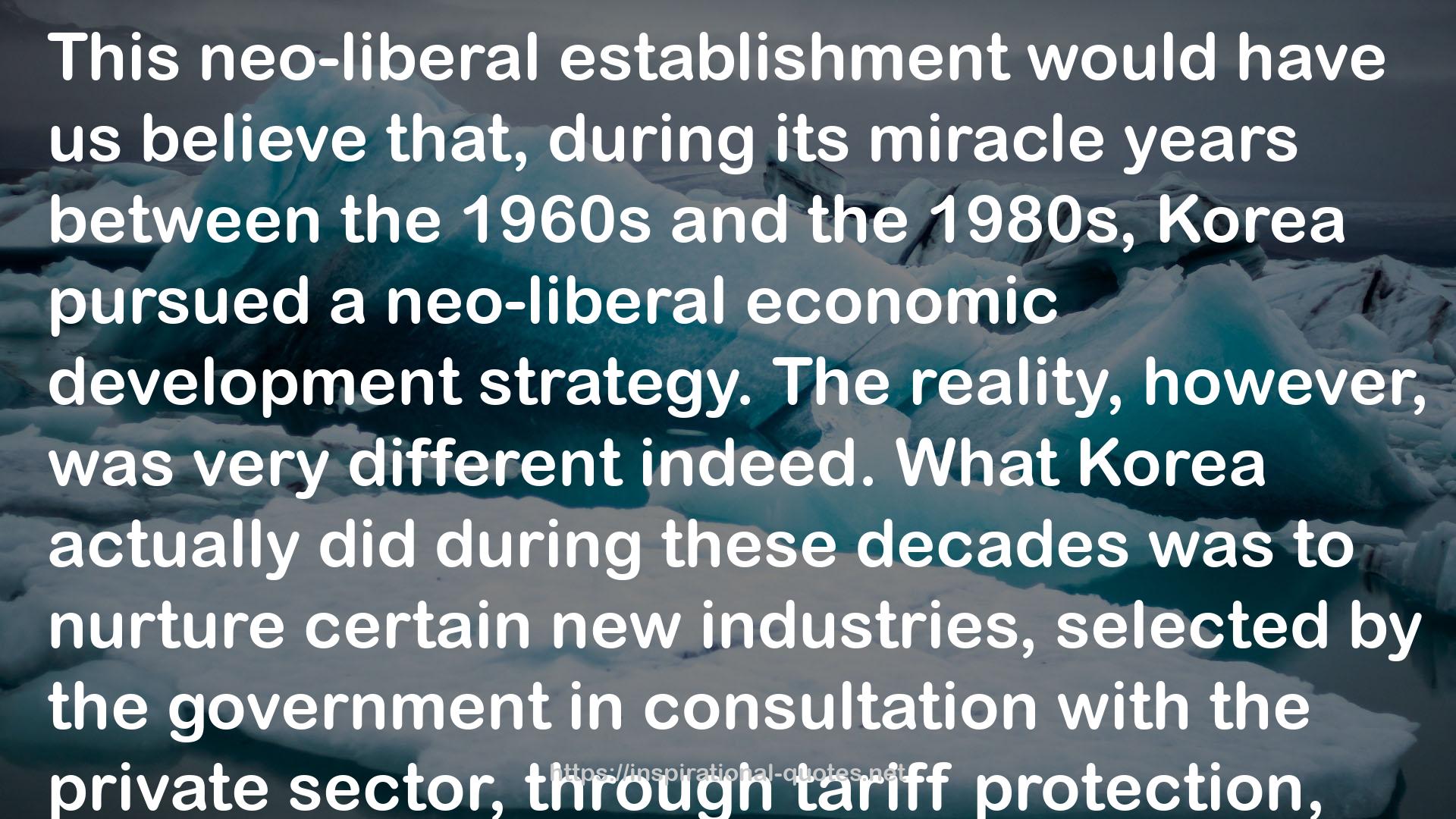" This neo-liberal establishment would have us believe that, during its miracle years between the 1960s and the 1980s, Korea pursued a neo-liberal economic development strategy. The reality, however, was very different indeed. What Korea actually did during these decades was to nurture certain new industries, selected by the government in consultation with the private sector, through tariff protection, subsidies and other forms of government support (e.g., overseas marketing information services provided by the state export agency) until they 'grew up' enough to withstand international competition. The government owned all the banks, so it could direct the life blood of business-credit. Some big projects were undertaken directly by state-owned enterprises-the steel maker, POSCO, being the best example-although the country had a pragmatic, rather than ideological, attitude to the issue of state ownership. If private enterprises worked well, that was fine; if they did not invest in important areas, the government had no qualms about setting up state-owned enterprises (SOEs); and if some private enterprises were mismanaged, the government often took them over, restructured them, and usually (but not always) sold them off again. "
― Ha-Joon Chang , Bad Samaritans: The Myth of Free Trade and the Secret History of Capitalism
